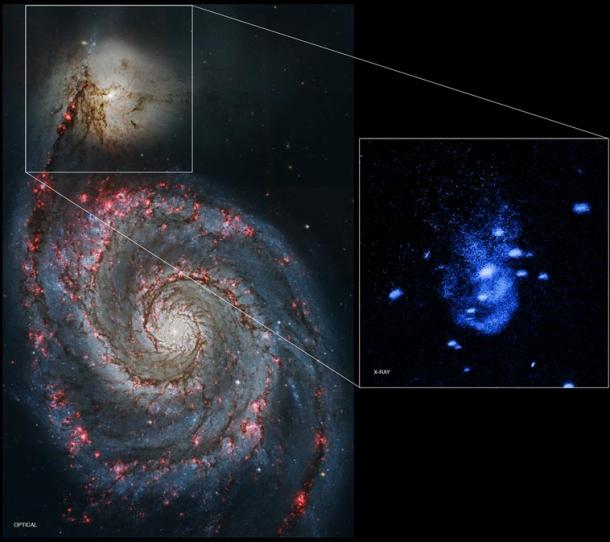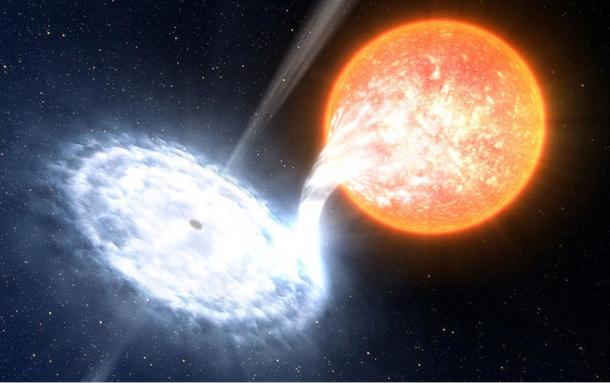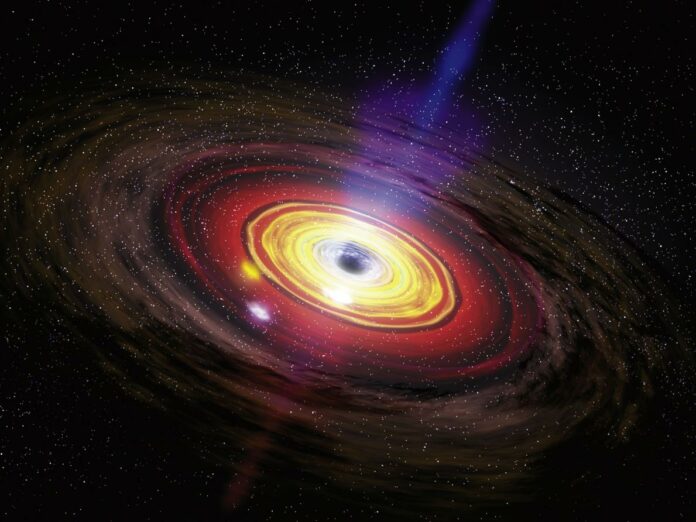An American researcher believes that there is a chance that complex life on habitable planets, such as Earth, could have been “switched on” by black holes. The results of his research seem to be supported by other theories published recently as well.
Astrophysicist Paul Mason, professor at New Mexico State University in Las Cruces, presented his work on January 6, 2016 at the meeting of the American Astronomical Society in Kissimmee, Fla. He is examining the role of super high-energy particles from black holes and exploding stars in the advent of habitable planets.
According to Discovery News, millions of years ago, before life started on the Earth, the planet was bathed in deadly radiation from the younger, angrier sun as well as a high tide of energetic particles. This energy, in the form of cosmic rays, was blasted around the galaxy and universe by exploding stars and giant black holes at the centers of galaxies. Somehow the exploding stars and black holes calmed down adequately for the cosmic ray flux to drop to more sustainable levels – allowing complex life on Earth-like planets to flourish.
”It has taken the universe a while for the cosmic ray density and the frequency of bad events to decrease enough for life to handle it,” Mason told Discovery News. He explained that those bad events included supernovas – which were much more common in the early universe. A supernova is commonly thought to be a rare astronomical event. It is a catastrophic destruction of the star which occurs during the last stellar evolutionary stages of a massive star’s life.


An outburst in the supermassive black hole centered in the small galaxy NGC 5195. (X-ray: NASA/CXC/Univ of Texas/E.Schlegel et al) “Astronomers often refer to black holes as ‘eating’ stars and gas. Apparently, black holes can also burp after their meal. This behavior would likely happen very often in the early universe, altering the evolution of galaxies.” Eric Schlegel told NASA.
- Is this the final proof that life on Earth came from outer space?
- Earth life ‘may have come from Mars’
- Scientists Reveal Extraterrestrial Life Found in Earth’s Atmosphere
- Building Blocks of Life May Have Extra-terrestrial Origin
Black Holes and the Expansion of the Universe
In the early universe, another problem for life in galaxies was that everything was much closer together. When the universe was small, everything was packed thick with sterilizing cosmic rays. It took billions of years for the expanding universe to pull things apart. As Mason told Discovery News: “It implies that the expansion of the universe is important for life.”


Artist’s representation of a black hole and a normal star separated by a few million kilometres. (ESO/L. Calçada) Because the two objects are so close to each other, a stream of matter spills from the normal star toward the black hole and forms a disc of hot gas around it. As matter collides in this accretion disc, it heats up to millions of degrees. Near the black hole, intense magnetic fields in the disc accelerate some of this hot gas into tight jets that flow in opposite directions away from the black hole. (Description by European Southern Observatory)
One element that was helpful to expand life in the universe and eventually fended off cosmic rays were the leftovers of all those supernovas. These were elemental factories thought to have created oxygen and nitrogen atoms, which are now the primary components of our atmosphere. The atmosphere created in this process protects the Earth from all but the most powerful cosmic rays that are still banging around the galaxy. The theory by Paul Mason seems to fit the observable universe, but there are still lots of unanswered questions. He announced that his research on this subject will continue.
Observing Light in a Black Hole
Mason’s finding was published at the same time as another research group announced a related discovery. Astronomers of Kyoto University have learned that black holes can be observed through a simple optical telescope when material from surrounding space falls into them and releases violent bursts of light.
By – NATALIA KLIMCZAK
Source and read more at: Ancient Origins.net
Follow them at: @ancientorigins on Twitter | ancientoriginsweb on Facebook
Best Regards
TBU NEWS



